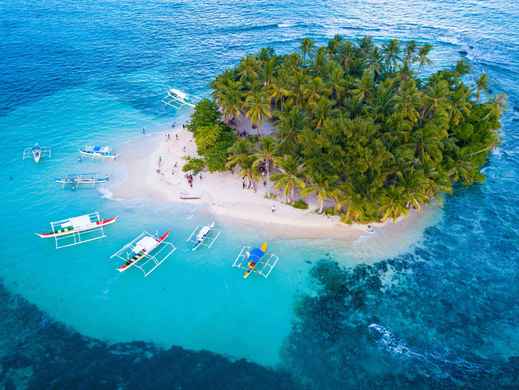


Solomon Islands
Oceania
/
Solomon Islands
Solomon Islands - a tropical paradise nestled in the South Pacific Ocean, beckons adventurers and nature enthusiasts with its pristine beaches, vibrant coral reefs, and rich cultural heritage. This archipelagic nation, comprising nearly 1000 islands, offers visitors a unique blend of Melanesian traditions, World War II history, and breathtaking natural wonders. From the bustling capital of Honiara on Guadalcanal to the remote atolls of the Western Province, the Solomon Islands promise an unforgettable journey through lush rainforests, crystal-clear lagoons, and ancient tribal villages.
Embark on a journey of discovery as you explore the Solomon Islands' diverse ecosystems, including the UNESCO World Heritage Site of East Rennell, home to the largest raised coral atoll in the world that contains a brackish lake. Dive into the warm waters of the Iron Bottom Sound, where wreck diving enthusiasts can explore sunken warships from the Pacific Theater. Immerse yourself in local culture by participating in traditional ceremonies, sampling Melanesian cuisine, and witnessing the intricate art of shell money craftsmanship. Whether you seek relaxation on secluded beaches or thrilling adventures in untamed wilderness, the Solomon Islands offer a truly authentic and off-the-beaten-path travel experience.

Travel Tips for Solomon Islands
What you need to know before traveling here
Practical Tips for Solomon Islands
Things to prepare and best way to visit
The best time to visit the Solomon Islands is during the dry season, which runs from May to November. During this period, you can expect less rainfall, lower humidity, and more comfortable temperatures. This is ideal for outdoor activities, beach visits, and exploring the islands. However, the Solomon Islands can be visited year-round, with the wet season (December to April) offering lush landscapes and fewer tourists.
Most visitors to the Solomon Islands need to obtain a visitor visa upon arrival, which is valid for up to 90 days. This applies to citizens of many countries, including the United States, United Kingdom, European Union, Australia, and New Zealand. You'll need a valid passport with at least six months remaining validity, a return ticket, and proof of sufficient funds for your stay. It's always best to check with the Solomon Islands Immigration Department or your nearest embassy for the most up-to-date visa requirements before traveling.
The Solomon Islands offer a diverse range of attractions, primarily centered around natural beauty and World War II history. Popular sites include the pristine beaches of the Western Province, world-class diving and snorkeling spots in the Florida Islands, and the WWII relics and museums on Guadalcanal. Visitors can also explore traditional villages, hike through lush rainforests, visit active volcanoes, and experience unique cultural festivals. The capital, Honiara, offers markets, the National Museum, and the American War Memorial.
The Solomon Islands are generally safe for tourists, but as with any travel destination, it's important to exercise common sense and take basic precautions. Petty theft can occur, so keep valuables secure and be aware of your surroundings, especially in Honiara. Health risks include malaria, so anti-malarial medication and mosquito protection are recommended. Natural hazards such as cyclones and earthquakes can occur, so stay informed about weather conditions. It's advisable to respect local customs and dress modestly, particularly when visiting villages or religious sites.
The local currency is the Solomon Islands Dollar (SBD). While major hotels and some larger businesses in Honiara accept credit cards, cash is the primary form of payment throughout the islands. ATMs are available in Honiara and some provincial centers, but they can be unreliable, so it's advisable to bring enough cash for your stay. Australian dollars are widely accepted and can be easily exchanged. Traveler's checks are not commonly used or accepted in the Solomon Islands.
See All Practical Tips for Solomon Islands

Explore Solomon Islands
Create your itinerary with our top picks below

Travel Tips for Solomon Islands

Explore Solomon Islands
More Destination Near Solomon Islands


















 Facebook
Facebook Instagram
Instagram TikTok
TikTok Youtube
Youtube Telegram
Telegram
